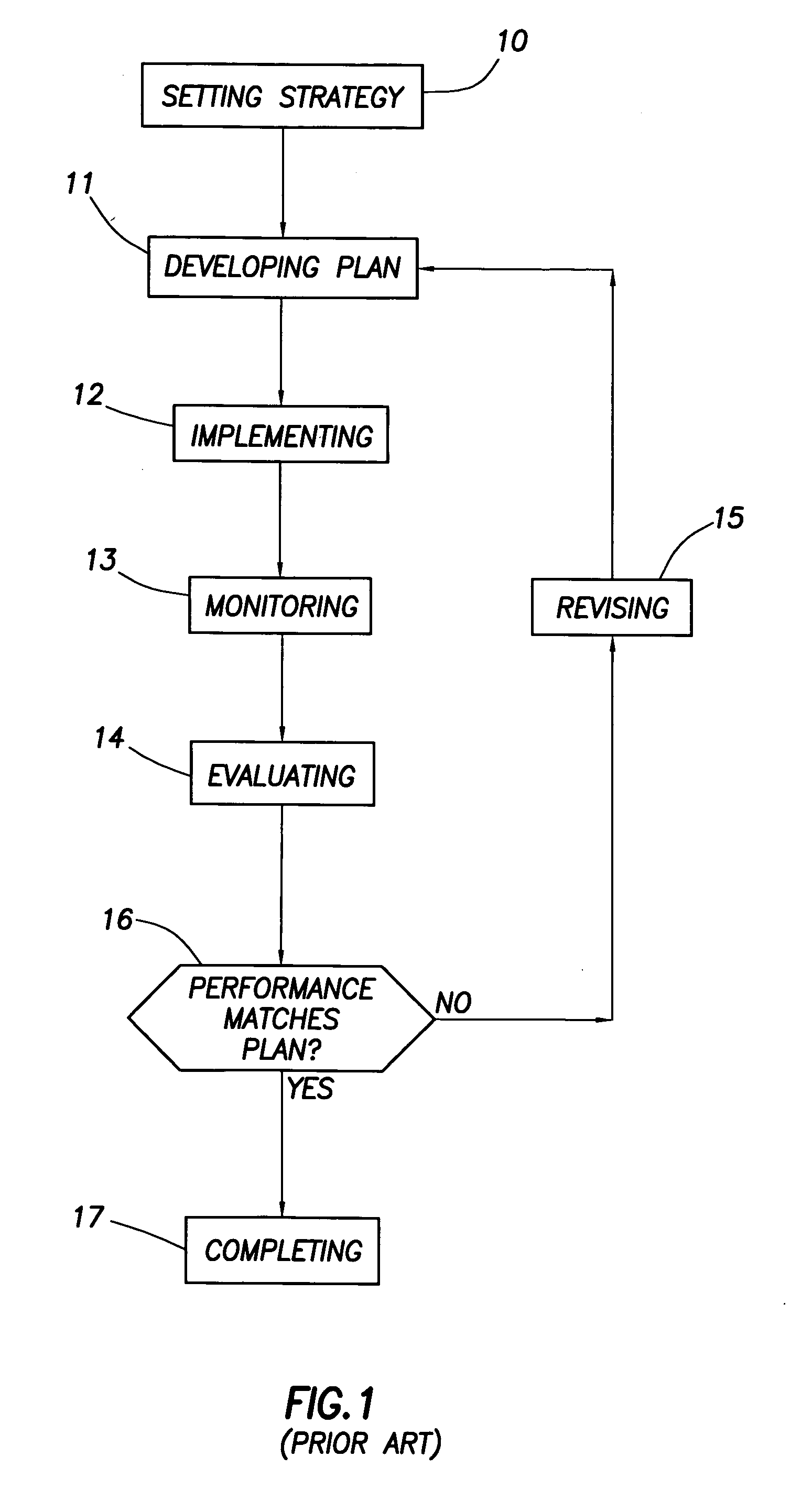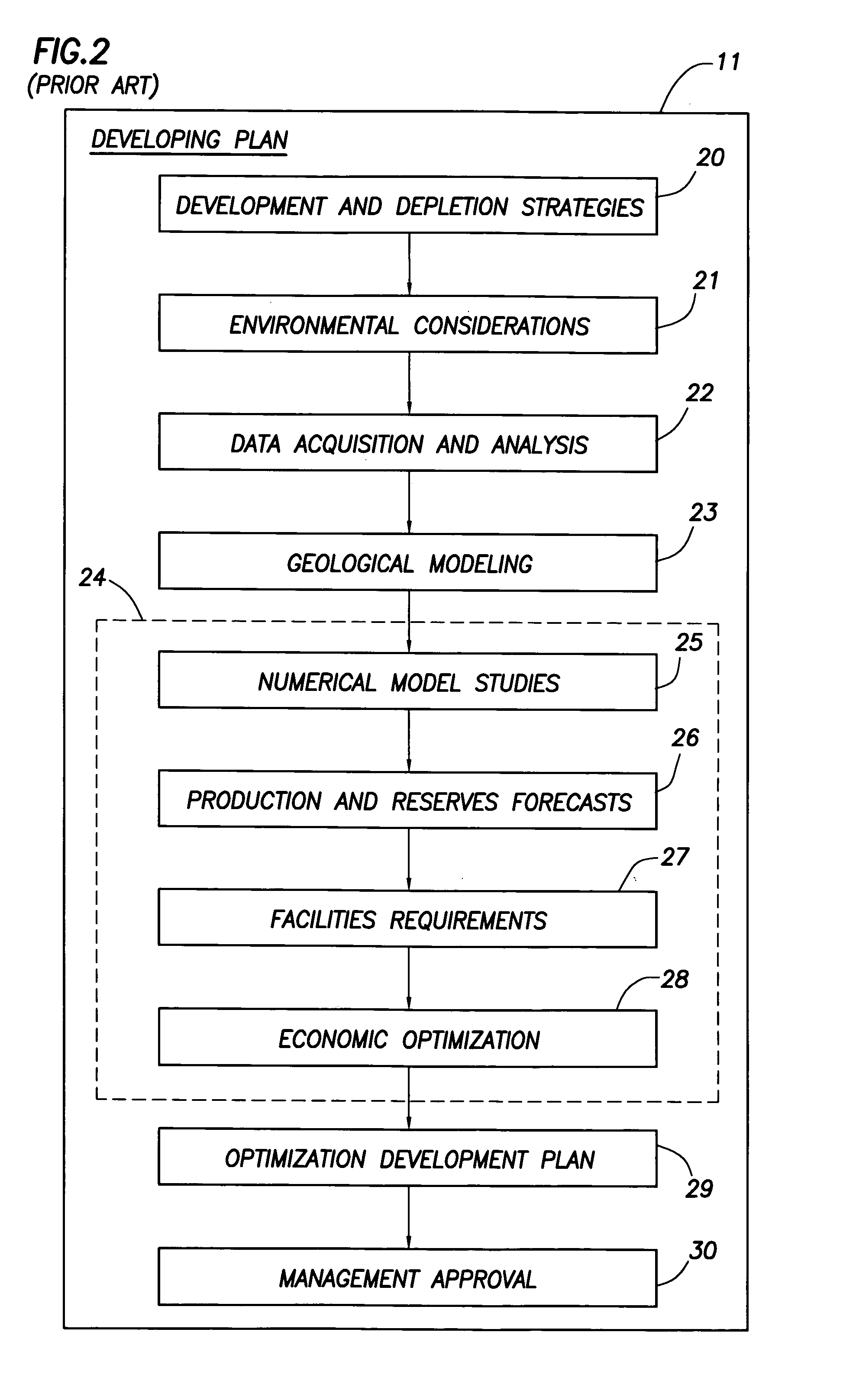Intergrated reservoir optimization
a reservoir optimization and integrated technology, applied in the field of integrated reservoir optimization, can solve problems such as insufficient publications in relation to the reservoir
- Summary
- Abstract
- Description
- Claims
- Application Information
AI Technical Summary
Benefits of technology
Problems solved by technology
Method used
Image
Examples
Embodiment Construction
[0062]Referring to FIG. 1, one prior art method for managing a gas or oil reservoir (as taught in the Satter and Thakur book cited in the References section below) is illustrated. FIG. 1 shows a sequence of key steps comprising reservoir management. These steps consist of: setting strategy 10, Developing Plan 11, Implementing 12, Monitoring 13, Evaluating 14, Performance matches plan 16, Revising 15, and Completing 17. Each of these steps or block of FIG. 1 will be discussed in detail below.
Setting Strategy, Block 10
[0063]In FIG. 1, the process begins with the Setting Strategy step in block 10 wherein short-term and long-term strategies or goals for managing the reservoir are set. This includes reviewing: the key elements of reservoir characteristics as is generally determined from seismic logging information, the total environment of the reservoir, and the available technology for developing the reservoir. Although one may not have a fixed strategy, one may nevertheless have severa...
PUM
 Login to View More
Login to View More Abstract
Description
Claims
Application Information
 Login to View More
Login to View More - R&D
- Intellectual Property
- Life Sciences
- Materials
- Tech Scout
- Unparalleled Data Quality
- Higher Quality Content
- 60% Fewer Hallucinations
Browse by: Latest US Patents, China's latest patents, Technical Efficacy Thesaurus, Application Domain, Technology Topic, Popular Technical Reports.
© 2025 PatSnap. All rights reserved.Legal|Privacy policy|Modern Slavery Act Transparency Statement|Sitemap|About US| Contact US: help@patsnap.com



